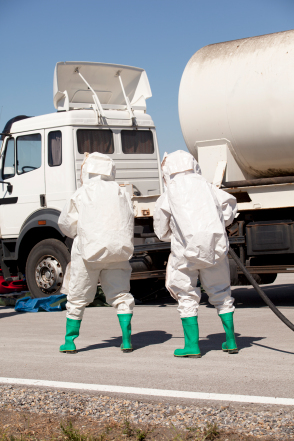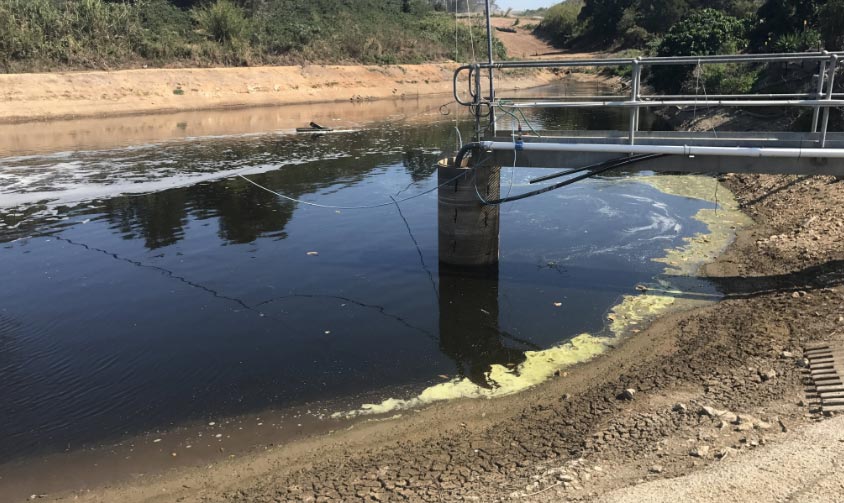Industrial Wastewater Treatment: Custom-made Solutions for Complicated Wastewater Difficulties
Industrial Wastewater Treatment: Custom-made Solutions for Complicated Wastewater Difficulties
Blog Article
How Fluid Garbage Disposal Functions: A Thorough Overview of Strategies and Technologies Utilized

Overview of Liquid Waste Types
The complexity of fluid waste kinds requires a complete understanding of their characteristics and ramifications for disposal. Fluid waste can generally be classified into several types, consisting of commercial, community, farming, and contaminated materials. Each category shows distinct buildings, requiring specific monitoring methods to alleviate ecological and wellness threats.
Industrial fluid waste originates from making procedures and frequently has a range of impurities, such as heavy metals, solvents, and natural substances. Municipal liquid waste, mainly making up wastewater from houses and commercial establishments, consists of natural matter, nutrients, and microorganisms (industrial wastewater treatment). Agricultural fluid waste, consisting of runoff from ranches, may consist of plant foods, pesticides, and animal waste, presenting threats to water top quality and environments
Dangerous fluid waste is identified by its poisoning, reactivity, or prospective to create damage. Understanding these varied fluid waste types is critical for establishing effective disposal approaches and making certain compliance with ecological guidelines.
Physical Treatment Approaches

Screening is the first action, where bigger fragments and debris are gotten rid of from the liquid waste using displays or grates. This procedure secures downstream tools from damages and makes certain smoother procedure. Adhering to testing, sedimentation uses gravitational force to separate solids from liquids. In sedimentation containers, larger fragments settle near the bottom, forming a sludge layer, while the clarified liquid can be additional dealt with.
Purification is an additional vital technique that includes passing the liquid through porous products, such as sand or membranes, to record smaller sized fragments. This action boosts the top quality of the fluid, making it ideal for succeeding treatment procedures.

Chemical Treatment Methods
Chemical therapy strategies are vital for properly managing fluid waste, especially in addressing dissolved and colloidal impurities that physical methods might not properly get rid of. These methods make use of various chemical agents to neutralize, speed up, or transform hazardous compounds right into much less damaging kinds.
One typical approach is coagulation and flocculation, where chemicals such as alum or ferric chloride are included to advertise the gathering of put on hold fragments. This process enhances sedimentation, permitting simpler removal of the resulting sludge. Additionally, oxidation procedures, using representatives like chlorine or ozone, are utilized to break down complex natural substances and virus, providing the waste more secure for discharge or further treatment.
Neutralization is an additional essential strategy, which readjusts the pH of acidic or alkaline waste streams to neutral degrees, stopping potential harm to downstream systems and the environment. Furthermore, advanced oxidation processes (AOPs) make use of mixes of oxidants and ultraviolet light to weaken relentless pollutants, accomplishing a higher level of treatment effectiveness.
Biological Treatment Processes
Biological treatment procedures play an essential function in the administration of liquid waste by utilizing microbes to decompose natural issue and minimize impurity levels. These procedures can be extensively categorized right into cardiovascular and anaerobic therapies, each utilizing specific microbial areas to attain reliable waste deterioration.
Aerobic treatment includes the use of oxygen to promote the malfunction of organic materials by bacteria. This procedure is commonly applied in activated sludge systems, where aeration storage tanks supply a conducive atmosphere for microbial growth, bring about the oxidation of organic toxins. The resultant biomass can be separated from dealt with effluent through sedimentation.
In comparison, anaerobic therapy takes place in the lack of oxygen, depending on different germs to damage down raw material. This method is specifically advantageous for high-strength waste, as it creates biogas, a renewable energy source, while decreasing sludge production. Technologies such as anaerobic digesters are regularly employed in local and commercial applications.
Both anaerobic and cardio organic therapies not just decrease the ecological influence of fluid waste yet click here now additionally facilitate resource recovery, making them crucial components of sustainable waste monitoring techniques. Their effectiveness, adaptability, and effectiveness support their extensive implementation across various industries.
Emerging Technologies in Disposal
Ingenious techniques to fluid garbage disposal are quickly evolving, driven by advancements in innovation and a raising focus on sustainability. Amongst these arising innovations, membrane layer bioreactors (MBRs) have actually gained grip for their capacity to incorporate organic therapy with membrane layer filtering, causing top quality effluent that can be reused in industrial wastewater treatment various applications. MBRs make it possible for smaller sized impacts and more effective operations compared to typical systems.
One more encouraging development is the usage of anaerobic digestion integrated with nutrient recovery modern technologies, which not only treats fluid waste however additionally generates biogas and recuperates valuable nutrients like nitrogen and phosphorus. This twin benefit improves source performance and decreases ecological impact.
In addition, advanced oxidation procedures (AOPs) are being embraced for the degradation of complicated organic toxins. These techniques utilize powerful oxidants and catalysts to damage down pollutants at the molecular level, offering a very effective remedy for difficult waste streams.
Additionally, the assimilation of man-made intelligence and artificial intelligence in waste monitoring systems is optimizing operational effectiveness and anticipating maintenance, bring about reduced expenses and boosted environmental compliance. These modern technologies show a substantial change towards more sustainable and effective liquid garbage disposal practices.
Verdict
In conclusion, reliable liquid waste disposal demands a detailed understanding of different techniques and innovations. By continuously progressing these methodologies, it comes to be possible to address the growing challenges connected with liquid waste, ultimately adding to environmental protection and source healing.
Fluid waste disposal is a vital facet of environmental monitoring, requiring a thorough understanding of different strategies and innovations customized to different waste kinds. investigate this site Liquid waste can broadly be categorized right into a number of kinds, including commercial, community, agricultural, and unsafe waste. Agricultural liquid waste, including drainage from farms, might include fertilizers, chemicals, and pet waste, presenting threats to water quality and ecological communities.
Different physical therapy approaches play a vital function in taking care of liquid waste efficiently - industrial wastewater treatment.In conclusion, efficient fluid waste disposal demands a comprehensive understanding of different methods and modern technologies
Report this page